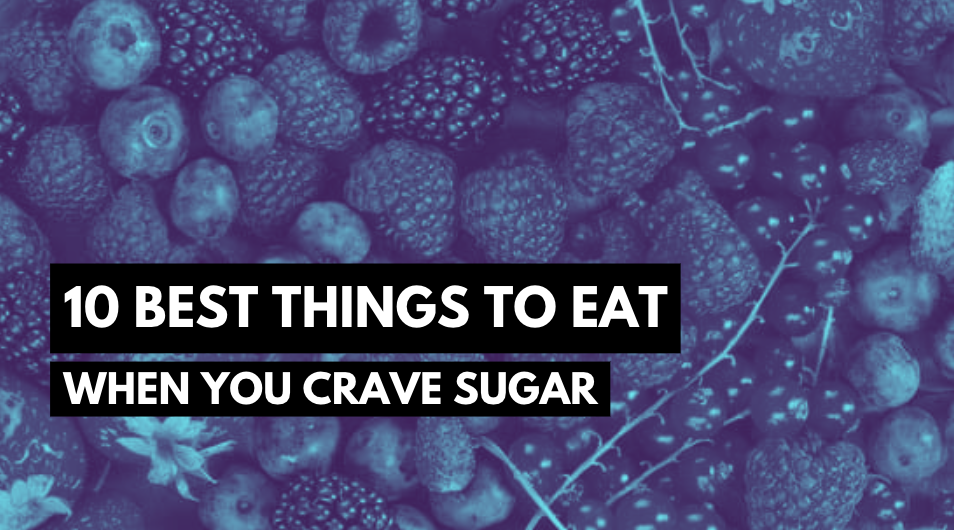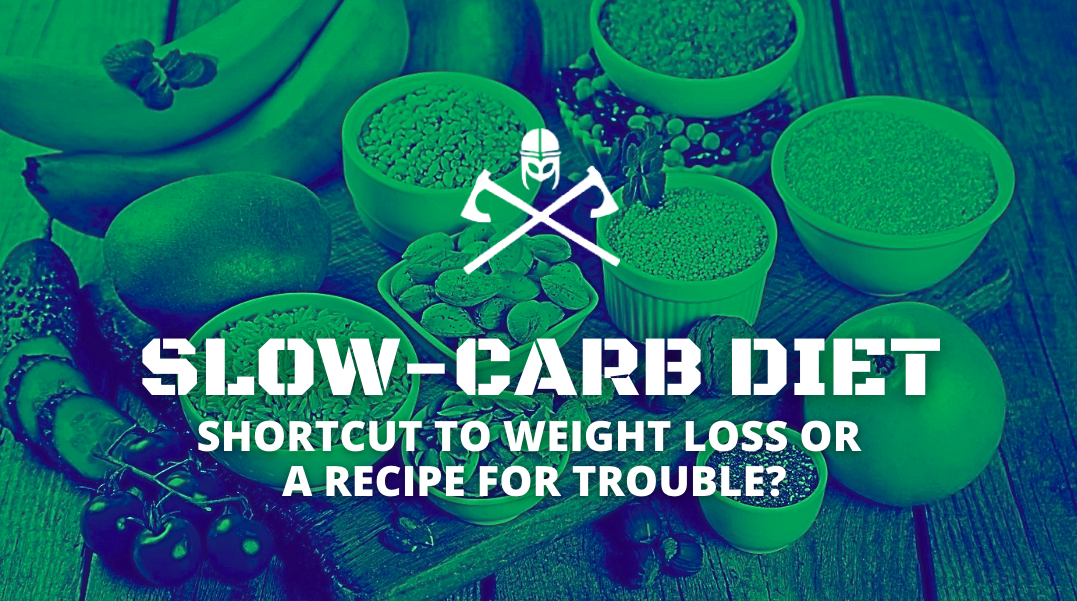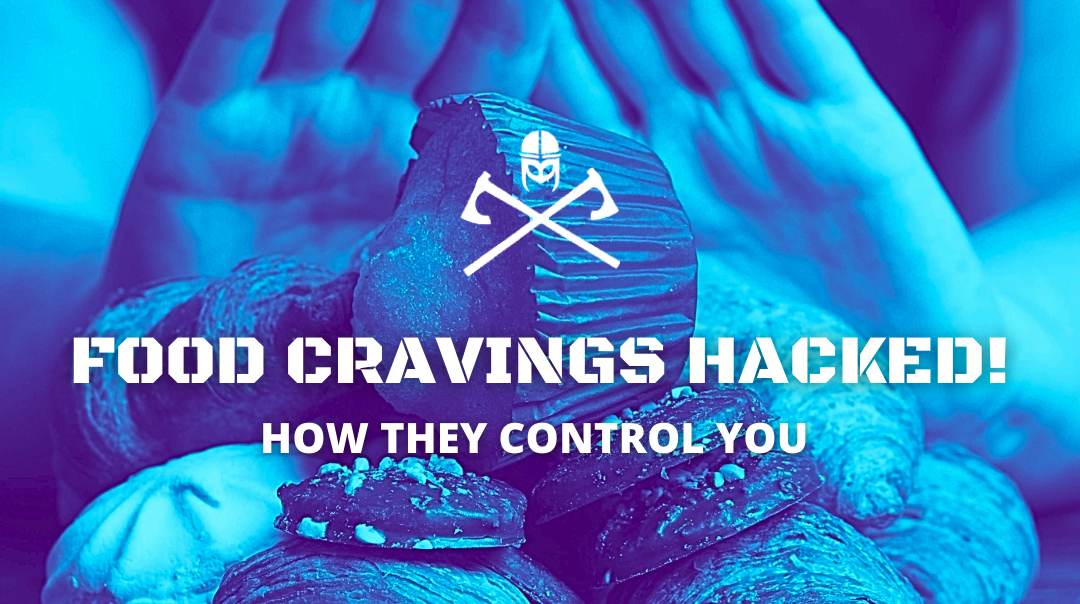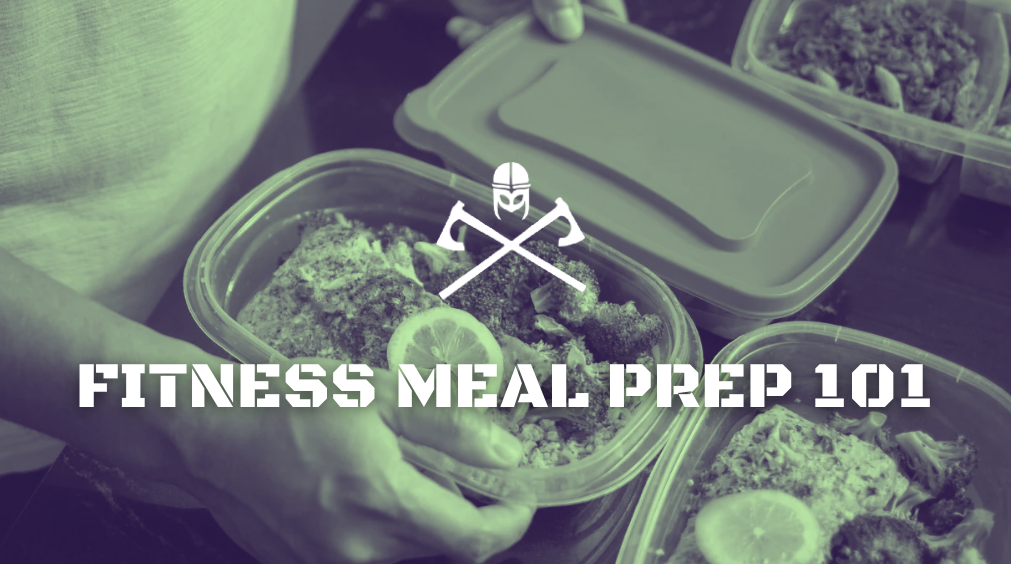
by wf_admin | May 19, 2025 | Blogs
Sugar cravings hit hard, especially when you’re tired, stressed, or just looking for a quick pick-me-up. But reaching for a candy bar or a cookie can throw off your nutrition goals fast.
The key is to satisfy your sweet tooth without wrecking your progress. Here are 10 smart, satisfying options to crush your cravings and stay on track.
1. Berries
Strawberries, blueberries, and raspberries are naturally sweet and packed with fiber and antioxidants. Keep them fresh or frozen and ready to go.
2. Greek Yogurt with Honey
Creamy Greek yogurt gives you protein to stay full, and a drizzle of honey adds just enough sweetness to calm the craving.
3. Dark Chocolate
A few squares of dark chocolate (70 percent or higher) give you that chocolate fix without the sugar overload. It’s rich, satisfying, and easy to portion.
4. Apple Slices with Peanut Butter
Crisp apples and creamy peanut butter are a classic combo that delivers natural sugars, fiber, and healthy fats. It’s sweet and filling.
5. Banana with Almond Butter
Bananas are naturally sweet and rich in potassium. Paired with almond butter, this snack keeps you satisfied and focused.
6. Frozen Grapes
Pop some grapes in the freezer and you’ve got a cold, sweet treat that feels like candy but is 100 percent fruit.
7. Cottage Cheese with Pineapple
Pineapple brings the sweetness, cottage cheese brings the protein. Together they make a light but crave-worthy snack.
8. Chia Pudding
Mix chia seeds with unsweetened almond milk and a touch of maple syrup or vanilla. Let it sit overnight. The texture is like pudding, and it’s packed with fiber.
9. Dates Stuffed with Nut Butter
Dates are nature’s candy. Add a spoon of almond or peanut butter and you’ve got a rich, sweet treat that feels like dessert.
10. Baked Apple with Cinnamon
Slice and bake an apple, then sprinkle with cinnamon. Warm, naturally sweet, and perfect when you want something that feels indulgent.
Cravings are normal. The trick is knowing how to handle them without falling off your plan. These ten options are easy to prep, easy to enjoy, and help you stay committed to your goals.
Need more support with your nutrition or training? Connect with the team here and we’ll help you lock in your game plan.

by wf_admin | Apr 2, 2025 | Blogs
You wake up feeling lighter, maybe even sharper. It’s been two weeks since you ditched the bread, the pasta, and the sugar-laden snacks that once ruled your cravings. Instead, your meals now revolve around protein-rich meats, leafy greens, and the occasional beans or lentils. You were skeptical at first, but the results speak for themselves.
The Slow-Carb Diet, popularized by Tim Ferriss in The 4-Hour Body, promises rapid weight loss by eliminating fast-digesting carbohydrates and focusing on foods that keep your blood sugar stable. While some swear by its simplicity and effectiveness, others including researchers and nutrition experts raise concerns about long-term sustainability, missing nutrients, and metabolic effects.
So, what’s the truth? Let’s break it down.
What Is the Slow-Carb Diet?
Imagine your diet as a highway system. On the Slow-Carb Diet, you’re choosing the back roads, foods that digest slowly and keep hunger at bay. Gone are the sugary cereals, white bread, and sweet fruits that send your blood sugar on a rollercoaster. Instead, you stick to five main food groups:
✔ Proteins (chicken, beef, fish, eggs)
✔ Legumes (black beans, lentils, chickpeas)
✔ Vegetables (spinach, broccoli, kale)
✔ Healthy fats (avocados, nuts, olive oil)
✔ Limited starches (only slow-digesting ones like quinoa)
🚫 Banned Foods:
❌ Bread, rice, pasta, and potatoes
❌ Dairy (except for cottage cheese)
❌ All fruit (yes, even that “healthy” apple)
❌ Sugar and sweeteners
❌ Processed foods
But before you panic, there is one cheat day per week, where anything goes. Ferriss argues that this not only boosts metabolism but also prevents mental burnout (Tim Ferriss Blog, 2012).
Why Do People Lose Weight on the Slow-Carb Diet?
The Slow-Carb Diet works for many people for a few key reasons:
Reduced Insulin Spikes – Cutting out high-glycemic carbs means your blood sugar stays more stable, reducing fat storage (PMC, 2023).
Increased Protein & Fiber – These keep you full longer, naturally lowering your calorie intake (Frontiers in Nutrition, 2019).
A Simple, Repeatable Meal Plan – Eating the same meals over and over may make calorie control easier (PMC, 2020).
Cheat Days Prevent Metabolic Slowdown – Some research suggests periodic overfeeding may boost leptin, the hormone that regulates hunger, keeping weight loss going (PMC, 2020).
For those looking to drop weight quickly without counting calories, this diet offers a structured, easy-to-follow approach.
But is it all good news?
The Downsides: What Experts Warn About
While many have had success with the Slow-Carb Diet, scientific research highlights some concerns.
🔴 Eliminating Whole Food Groups – Cutting out fruits and dairy may lead to vitamin deficiencies, especially in vitamin C, potassium, and calcium (PMC, 2023). Over time, this could impact bone health, immune function, and heart health.
🔴 High-Protein, Low-Carb Fatigue – Some people report low energy, brain fog, and irritability in the early stages. This may be due to glycogen depletion, your body struggling to adapt without its usual quick fuel from carbohydrates (PMC, 2020).
🔴 Gut Health & Fiber Imbalance – While legumes provide some fiber, eliminating fiber-rich fruits could disrupt gut microbiota balance, which plays a major role in digestion and immunity (PMC, 2020).
🔴 The Alcohol Rule – The Slow-Carb Diet allows moderate amounts of dry wine but bans beer and mixed drinks. However, research from the World Health Organization (WHO, 2023) states that no amount of alcohol is truly safe, raising concerns about promoting even “moderate” drinking.
While the diet can jumpstart weight loss, these potential drawbacks mean it may not be the best fit for everyone, especially for those looking for long-term, sustainable health changes.
What Does Science Say About Low-Carb Diets in General?
The Slow-Carb Diet is similar to other low-carb diets, and research on low-carb eating patterns has produced mixed results:
✅ Weight Loss Works At First – Studies show that low-carb diets can lead to rapid weight loss initially, often due to water loss and reduced calorie intake (PMC, 2020).
⚠️ Metabolic Risks Over Time – Long-term adherence to low-carb diets has been linked to higher LDL (“bad” cholesterol) and increased cardiovascular risk if not properly balanced (Frontiers in Nutrition, 2019).
❓ Individual Variability – Some people thrive on low-carb eating, while others experience mood swings, reduced athletic performance, and even hormonal imbalances (PMC, 2023).
So, while the Slow-Carb Diet can be an effective tool, it’s not a magic bullet, and it should be tailored to individual needs.
Is the Slow-Carb Diet Right for You?
Here’s how to know if the Slow-Carb Diet might be a good fit:
✔ You enjoy structured eating with limited food choices
✔ You don’t mind cutting out fruit and most carbs
✔ You want a simple, repeatable meal plan with no calorie counting
✔ You like the idea of a cheat day to prevent burnout
But it may not be ideal if:
❌ You struggle with low energy or mood swings when cutting carbs
❌ You need more dietary flexibility or prefer variety
❌ You have a history of disordered eating, as the “binge day” concept can reinforce unhealthy behaviors
Final Thoughts: A Tool, Not a Lifestyle?
The Slow-Carb Diet can be a powerful way to jumpstart weight loss, but it comes with trade-offs. The simplicity and structure make it easy to follow, but eliminating entire food groups could lead to nutrient deficiencies and long-term health concerns.
So, what’s the best approach?
👉 Use it as a tool, not a permanent lifestyle. Try it for a few months, monitor how your body responds, and adjust as needed.
👉 Focus on whole, nutrient-dense foods. If you follow the diet, consider adding nutrient-rich fruits and dairy in moderation.
👉 Listen to your body. If you’re experiencing fatigue, irritability, or gut issues, you may need more dietary balance.
At the end of the day, the best diet is the one that is sustainable, enjoyable, and supports long-term health. If Slow-Carb works for you, great. If not, there are other ways to achieve your goals.
Want to dive deeper into the science? Check out these resources:
What do you think? Would you try the Slow-Carb Diet? Drop a comment below! 🚀

by wf_admin | Mar 25, 2025 | Blogs
It starts with a craving, just a small one. Maybe it’s the warm, golden fries calling your name as you pass a fast-food joint. Or the neatly stacked cookies in your pantry, waiting like a sweet little secret. “Just one,” you tell yourself. But one turns into another. And another. Before you know it, you’re staring at an empty plate, the pleasure fading into regret.
If this sounds familiar, you’re not alone. The irresistible pull of hyper-palatable foods, those engineered to light up our brain’s reward system, is no accident. And, according to recent research, these foods may be one of the biggest obstacles standing between you and your weight loss goals.
But what if we told you that escaping their grip isn’t about eliminating them, but about understanding and outsmarting them?
The Science of Temptation: Why Some Foods Feel Impossible to Resist
Picture this: a perfect storm of sugar, fat, and salt designed to override your natural hunger cues and keep you reaching for more. These are known as hyper-palatable foods, and they dominate grocery store shelves and restaurant menus.
According to a Newsweek report on hyper-palatable foods, research shows that these foods hijack the brain’s reward system, triggering the release of dopamine, the same neurotransmitter involved in addiction. This is why you can feel completely full after a meal, yet still crave dessert the moment it’s offered.
A study published in the Journal of Metabolic Health found that hyper-palatable foods contribute to overconsumption and weight gain by bypassing the body’s natural satiety signals. Essentially, they make it easier to overeat before your brain even registers that you’re full.
It’s not just anecdotal—data shows that the prevalence of hyper-palatable foods in the U.S. has increased by 20% over the last 30 years, making it harder than ever to resist them (Newsweek).
Are Trigger Foods Stopping Your Weight Loss?
While there’s no universal list of trigger foods, they tend to fall into common categories:
- Sugary treats (cookies, ice cream, candy)
- Salty snacks (chips, fries, popcorn)
- Fat-heavy comfort foods (cheese-laden pastas, fried foods, creamy sauces)
- Carbonated and sugary drinks (soda, energy drinks, sweetened coffee drinks)
These foods aren’t just tasty, they’re scientifically designed to be difficult to stop eating. Research in PubMed (NCBI, 2011) found that foods high in sugar and fat can activate the same neural pathways as drugs like cocaine, reinforcing compulsive consumption.
For those trying to lose weight, this presents a major challenge. Trigger foods are often high in calories, low in fiber, and packed with ingredients that disrupt hunger signals. If left unchecked, they can easily sabotage a calorie deficit, the key to fat loss.
How to Identify Your Personal Trigger Foods
Not all hyper-palatable foods are your trigger foods. Some people can eat a piece of chocolate and move on, while others find themselves unable to stop.
To find your triggers, keep a food journal for two weeks. Track not just what you eat, but:
- How you feel before and after eating
- Whether you ate mindfully or impulsively
- How much you ate compared to your initial intentions
Then, look for patterns:
- Are there foods that always lead to overconsumption?
- Do you feel guilt or loss of control after eating certain foods?
- Do some foods trigger intense cravings, even when you’re not hungry?
If so, you’ve found your triggers.
Breaking Free: 5 Science-Backed Strategies to Outsmart Trigger Foods
Now that you know which foods pull you in, here’s how to take back control, without feeling deprived.
1. Rewire Your Brain with Mindful Eating
Imagine biting into a warm, gooey cookie. Instead of wolfing it down, you pause. You notice its rich smell, soft texture, buttery sweetness. You chew slowly, savoring each bite.
This is mindful eating, a technique shown to reduce binge eating and emotional eating (Harvard T.H. Chan School of Public Health).
🔹 How to practice it:
- Eat without distractions (no TV or scrolling).
- Chew slowly and savor flavors.
- Stop when you feel satisfied, not stuffed.
A study in the Journal of Metabolic Health found that mindful eating reduced caloric intake and improved weight loss outcomes, without the need for strict dieting.
2. Don’t Ban Trigger Foods—Integrate Them
The worst thing you can do? Swear off your favorite foods entirely.
A Newsweek analysis highlights that when people label foods as “off-limits,” it intensifies cravings, leading to binge-eating cycles.
Instead, practice structured flexibility:
✅ Pair trigger foods with high-protein, high-fiber meals.
✅ Eat a small portion intentionally instead of avoiding it altogether.
✅ Buy single servings instead of large quantities.
Example: If French fries are your trigger food, order a small portion alongside a protein-rich meal (like grilled chicken and veggies) rather than trying to abstain completely.
3. Control Your Food Environment
You can’t control cravings, but you can control what’s available when those cravings hit.
🔹 Simple environment hacks:
- Store trigger foods out of sight (not on the counter).
- Keep healthy alternatives within reach (pre-cut veggies, protein snacks).
- Portion out indulgent foods before eating, never eat straight from the package.
A PubMed study found that individuals who kept unhealthy foods visible ate more frequently and in larger quantities than those who stored them away.
4. Eat at Regular Intervals to Prevent ‘Hanger’
Ever notice how cravings intensify when you’re starving? That’s because low blood sugar heightens your brain’s response to hyper-palatable foods.
🔹 How to stabilize blood sugar:
- Eat every 3-4 hours (don’t skip meals).
- Prioritize fiber, protein, and healthy fats at each meal.
- Carry balanced snacks (like almonds or Greek yogurt) to prevent hunger-driven impulse eating.
A UC San Diego study on metabolic health found that eating consistently throughout the day reduces the urge to overeat hyper-palatable foods.
5. Be Compassionate—Not Punitive
Slipping up doesn’t mean you’ve failed. Research from PubMed (2011) shows that self-compassion leads to better long-term weight management than guilt-driven dieting.
🔹 How to reframe your mindset:
- After indulging, move on. No guilt, no punishment.
- Talk to yourself like a friend. Would you shame them for eating a cookie?
- Focus on consistency, not perfection.
This shift helps reduce emotional eating episodes, making long-term success easier to sustain.
Final Thoughts: Winning the Battle Against Trigger Foods
You don’t have to eliminate your favorite foods, you just have to reclaim control. By understanding how hyper-palatable foods manipulate cravings, identifying your personal triggers, and practicing smart strategies, you can enjoy food without guilt or loss of control.
Next time you reach for that cookie, take a breath. You’re in charge. Not the food.
🔹 Want more insights on food psychology and mindful weight loss? Explore the studies referenced in this article:
Food should be enjoyed, not feared. And with the right approach, you can break free from trigger foods for good.

by wf_admin | Mar 19, 2025 | Blogs
Meal prepping is one of the most effective ways to stay on track with your fitness goals. Whether you’re training for competition, improving your martial arts performance, or just trying to live a healthier life, having your meals planned and prepared in advance eliminates the guesswork and helps you fuel your body with the right nutrients.
In this post, we’ll break down:
✔️ Why meal prep works
✔️ How to get started
✔️ How to make it a lasting habit
Why Meal Prep Works
✅ Saves Time & Reduces Stress – No more scrambling to find a healthy meal after a long training session or workday. Your food is ready when you need it.
✅ Helps with Portion Control – Overeating is easy when you’re not tracking your meals. Prepping ahead ensures you eat the right amounts for your fitness goals.
✅ Supports Your Training & Recovery – Eating balanced meals with lean protein, healthy fats, and complex carbs fuels performance and speeds up recovery.
✅ Saves Money – Meal prepping is way cheaper than eating out or buying expensive pre-made fitness meals.
✅ Eliminates Bad Food Choices – When you have healthy food ready, you’re less likely to grab fast food or snacks that don’t support your fitness journey.
How to Get Started with Meal Prep
Starting meal prep doesn’t have to be overwhelming. Follow these simple steps:
🔹 Step 1: Plan Your Meals
- Decide what you’ll eat for the week. Keep it simple, pick a protein (chicken, fish, tofu), a carb (rice, quinoa, sweet potatoes), and a vegetable (broccoli, spinach, bell peppers).
- Stick to meals you enjoy to make it sustainable.
🔹 Step 2: Make a Grocery List
- Write down exactly what you need to avoid buying unnecessary items.
- Buy in bulk to save money on staples like rice, oats, and frozen veggies.
🔹 Step 3: Batch Cook & Store Properly
- Cook your protein, carbs, and veggies in large batches.
- Store meals in airtight containers. Use glass containers for easy reheating.
- Refrigerate meals for the next 3-4 days and freeze extras for later.
🔹 Step 4: Portion Out Your Meals
- Use a food scale or portion out meals based on your daily calorie and macro goals.
- Label containers to keep things organized.
🔹 Step 5: Keep It Simple & Repeat
- Stick to easy, repeatable meals to make meal prep efficient.
- Adjust based on what works for you, experiment with new recipes when you’re comfortable.
How to Make Meal Prep a Habit
✔️ Set a Meal Prep Day – Pick a day (Sunday works for many people) to prep your meals for the week. Treat it like an important training session.
✔️ Stay Consistent – The more you meal prep, the easier and faster it becomes. Start with just a few days’ worth of meals if prepping for the whole week feels like too much.
✔️ Have a Backup Plan – Life happens. Keep a few emergency healthy meals in the freezer or stock protein bars, nuts, and other quick options for busy days.
✔️ Track Your Progress – Notice how meal prep helps your energy levels, workouts, and recovery. Keeping track of progress will motivate you to stick with it.
✔️ Make It Enjoyable – Play music, listen to a podcast (like the Warrior Mindset Podcast), or prep with a friend to make it fun.
Meal prepping isn’t just about eating healthy, it’s about setting yourself up for success in fitness and in life. By planning ahead, you save time, money, and mental energy while ensuring your body gets the fuel it needs.
Start small, stay consistent, and before you know it, meal prepping will become second nature. Your body (and your training) will thank you for it.
Need help with your fitness and nutrition goals? Visit us at and learn to train like a warrior! 💪

by wf_admin | Mar 11, 2025 | Blogs
Have you ever wondered how your body cleans itself from the inside out? That’s where autophagy comes in—a powerful cellular process that helps rejuvenate, detoxify, and optimize your health. But while it has incredible benefits, it’s important to understand both the pros and potential drawbacks before diving in.
What is Autophagy?
Think of autophagy as your body’s built-in cleanup crew, working behind the scenes to remove damaged cells, recycle waste, and boost overall vitality. It’s like hitting the reset button on your system, keeping your body and mind in peak condition.
The Benefits of Autophagy
✅ Youthful Skin & Longevity – Autophagy helps slow down signs of aging by clearing out old, dysfunctional cells and making room for new, healthier ones. It’s like cellular anti-aging from the inside out!
✅ Stronger Immunity – By removing harmful, damaged cells, autophagy supports your immune system, keeping you resilient against illness.
✅ Improved Metabolism & Fat Burning – This process encourages your body to use stored fat for energy, helping regulate blood sugar and maintain a healthy weight.
✅ Sharper Brain Function – Clearing out cellular waste in the brain improves focus, memory, and mental clarity—so you stay sharp and alert.
✅ Cellular Detox & Renewal – Autophagy aids in flushing out toxins and harmful substances, promoting overall well-being.
Things to Consider: The Other Side of Autophagy
🚨 Not for Everyone: While fasting can trigger autophagy, it’s not ideal for everyone. Those with a history of eating disorders, low blood sugar issues, or certain medical conditions should consult a healthcare professional before attempting fasting.
🚨 Muscle Loss Concerns: Extended fasting can lead to muscle breakdown if not balanced properly. Strength training and adequate protein intake are crucial to prevent muscle loss while incorporating fasting.
🚨 Potential Energy Dips: If you’re new to fasting, you might experience fatigue, brain fog, or irritability before your body adapts. This can impact performance in training sessions, so timing your fasting windows wisely is key.
🚨 Hormonal Effects: Fasting can impact hormones differently in men and women. Women, in particular, should be cautious as extended fasting may disrupt menstrual cycles or affect hormone balance.
How to Activate Autophagy Safely
The key to triggering this natural process? Fasting. When you give your body a break from food for about 16-17 hours, it shifts gears into self-cleaning mode. During this time, stick to:
💧 Water
☕ Black coffee
🍵 Tea
⚡ High-quality electrolytes
Finding the Right Balance
Autophagy is a powerful tool, but like anything in health and fitness, balance is everything. Fasting can be an effective strategy when done mindfully, but it’s not a one-size-fits-all solution.
✅ Listen to your body – If fasting negatively impacts your energy, mood, or performance, adjust accordingly.
✅ Prioritize nutrient-dense foods – When you do eat, make it count with high-quality proteins, fats, and carbohydrates.
✅ Train smart – If fasting, schedule intense workouts after breaking your fast to maintain strength and recovery.
Want to learn more about fitness, nutrition, and longevity? Join us at Warrior Fitness Martial Arts, where we train not just the body, but the mind and spirit for peak performance!





